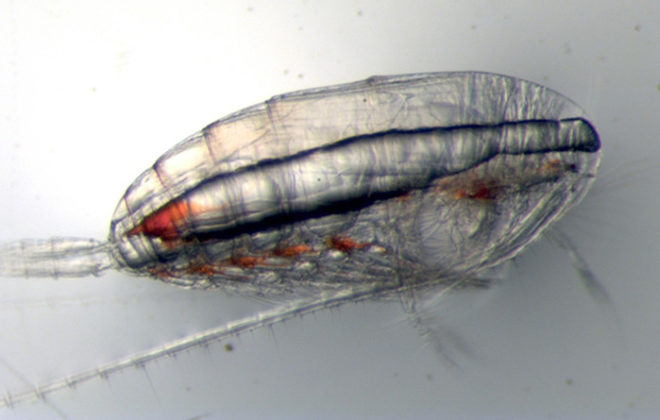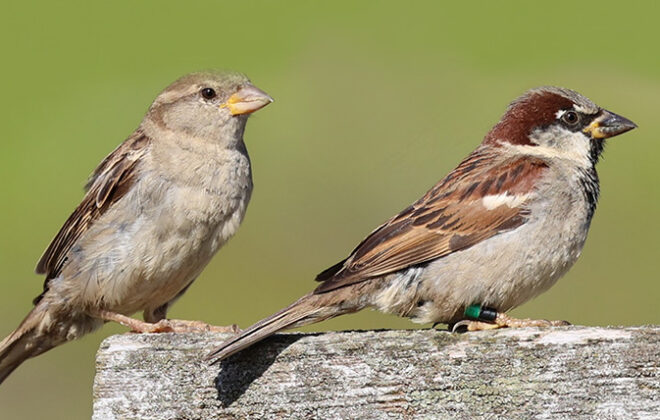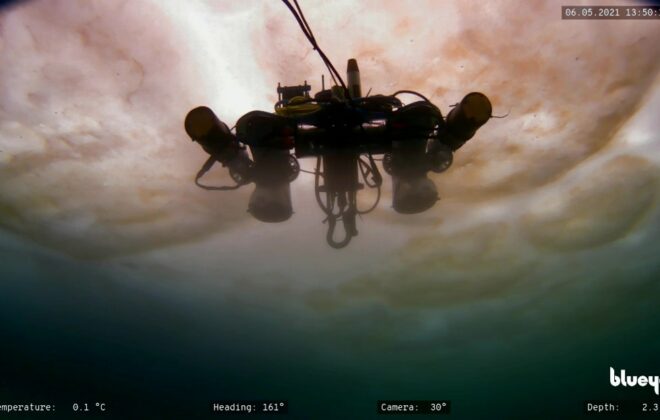Birds and bugs: Trapping and tracking the vital insect food for young birds
Spring has turned into summer quickly and the insects which are vital food for bird chicks are here. While recent studies1 have drawn attention to dramatic declines of entire insect populations, little is known about consequences for other species depending on insects for food, including many birds, which may face the same plight. We are therefore collecting insects throughout the season with help from the local people across an entire archipelago in northern Norway.
Expanding a long-term bird study
A German study2 caught the attention of the media, documenting a 77 % decline in flying insect biomass over a three decades across many small nature reserves. Perhaps surprisingly, such long-term trends in insect populations remain scarcely studied and their ecological (short-term) and evolutionary (long-term) consequences even more so. A study in Science3 last year showed a 29 % decline in bird numbers over the last 48 years across North America. Such studies point to the bio component of the biodiversity crisis, also known as the sixth mass extinction, as species extinctions are expected to be preceded by losses in the abundance or biomass of individuals.
Since 1993 researchers at the Department of Biology at NTNU have monitored several island populations of house sparrows living off the coast of northern Norway. Such studies of bird populations have contributed to our understanding of fundamental biological processes in vertebrates. However, the birds are part of a complex ecosystem that involve other trophic levels, e.g. prey species (insects and other invertebrates) and predators (such as sparrow hawks and cats). Like most passerine birds (i.e. songbirds and other perching birds – the birds you most commonly see in your garden), sparrows initially feed their nestlings exclusively with insects (and other arthropods) in order to ensure them a protein-rich diet during the important growth phase4. We are therefore investigating how this link between prey and predators impacts population fluctuations of both bugs and birds.
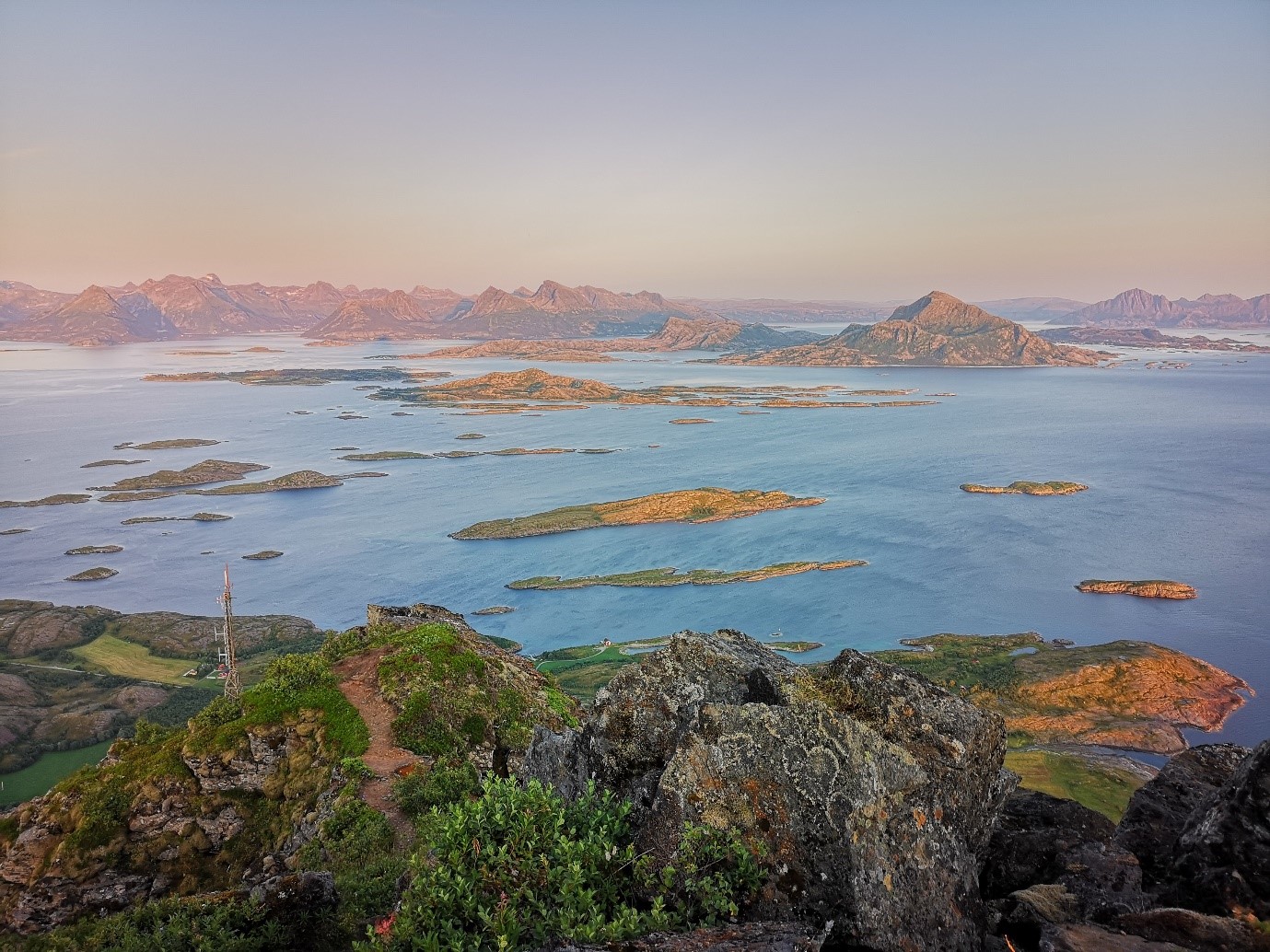
Trapping insects
We are using insect traps of the tent-like Malaise type across our sparrow study site spanning more than 10 islands in the Helgeland archipelago in northern Norway. The traps are named after the Swedish entomologist René Malaise, who was inspired on a field trip to Burma in the 1930s by all the insect flying into his tent that always ended up in the highest corner of the tent. This was annoying, even to an entomologist, but Malaise realized that the insects easily could be collected from the tent corner in a small vessel. It is therefore a passive trap that primarily catches small actively flying animals.
Across even closely located islands we found remarkable variation in the amount and diversity of insects. Insect diversity peaked in early June, but the biomass of insects peaked two months later. However, sparrows lay multiple clutches and raise chicks throughout the season.
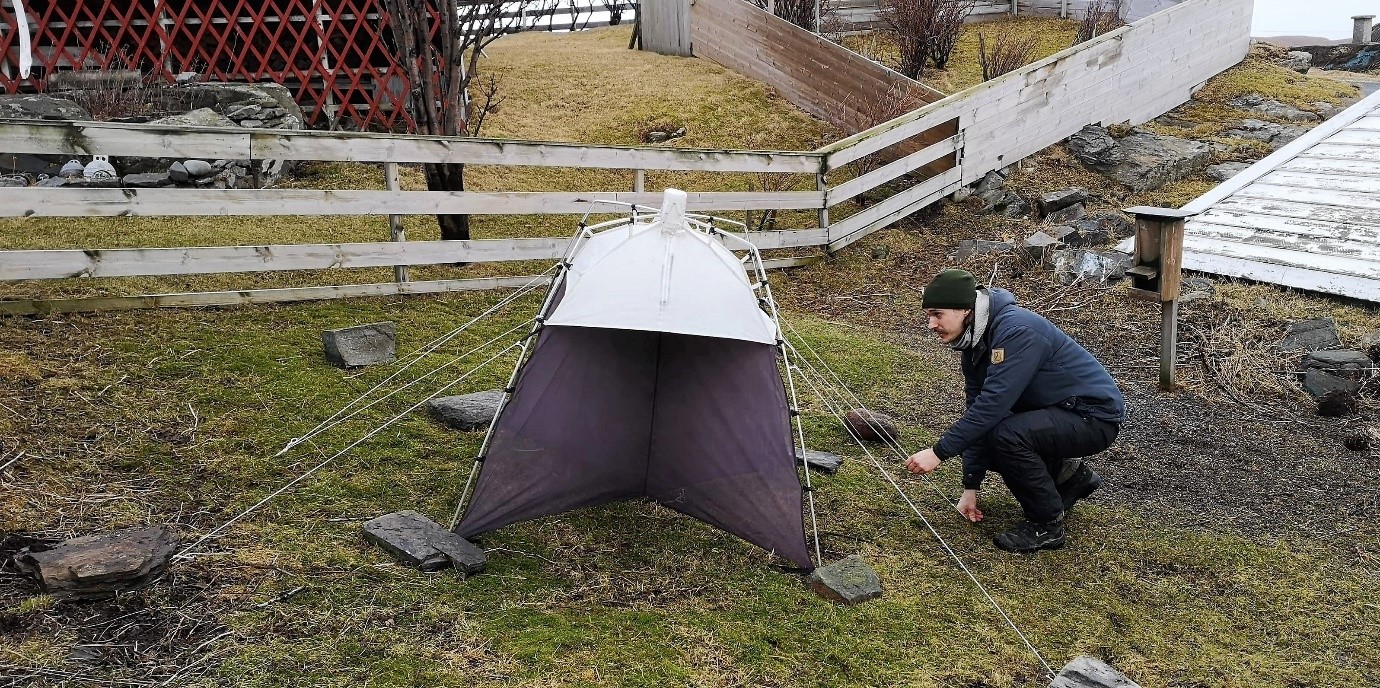
More bugs, more birds
When there were more insects in the traps, especially in any two weeks following egg laying, we saw that the sparrows were laying more clutches each week. Furthermore, with more insects in the traps each nestling had lower risk of dying.
Although this is the densest sampling of insect communities in Norway, where little is known about changes in insect populations, it will be several years before we can document local population trends. Insect populations are, however, expected to respond more swiftly to climate change, with many species being intimately associated with temperature or leaf emergence, whereas higher trophic levels (including sparrows and sparrow hawks) might show delayed responses to such changes. In particular, the house sparrows will probably have to track the earlier advance of insects to maintain their current population sizes.
What do the birds eat?
While the insect traps show us the buffet available to the sparrows, we need to know more about which types of insect they prefer to catch and eat. The house sparrow is a generalist when it comes to food, but its ability to find and catch insects may affect its diet. Traces of this diet can be found in the poop from the chicks, that they willingly share as soon as they are picked from the nest by researchers. Identifying small pieces of DNA in the feces allow us to identify which species the chicks have been fed with. The sparrows do seem to prefer crane flies and other types of flies, which we were also able to catch to a large extent in the traps.
The future of birds and bugs
Some researchers have warned that the disappearance of insects could trigger cascading effects within ecosystems on a global scale in the near future. The conservation problem; the decline of insect populations and potential consequences for both insect-eating birds, birds of prey, flowering plants and humans, is complicated. On a local scale well-meaning attempts at providing bee-friendly flowers and building insect hotels may turn out to have an local impact for neighborhood birds, such as the house sparrows. However, house sparrows, some of the world’s most common birds, are now classified as threatened in the UK and near-threatened in Germany and although largely unknown, the reason may well be large declines in insect populations.
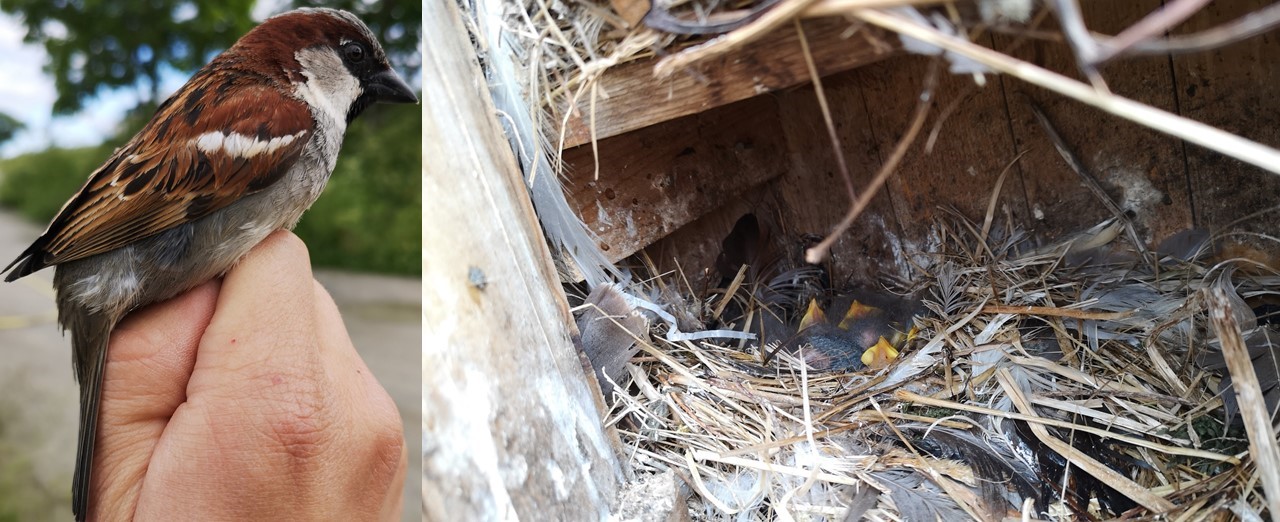
References
- When the hum of insects disappears. Norwegian SciTech News
Published: December 18, 2018 - More than 75 percent decline over 27 years in total flying insect biomass in protected areas. PLOS ONE
Published: October 18, 2017 - Decline of the North American avifauna. Science
Published: October 4, 2019 - Stress in the nest can have lifelong effect. Norwegian SciTech News
Published: July 27, 2017
Further reading:
Martin Gjestrud Julseth (2019) “The effect of arthropod availability on reproductive phenology and success in a multi-brooded passerine Passer domesticus”. Master thesis, supervised by Thor Harald Ringsby, Thomas Kvalnes, Michael Le Pepke, Bernt Rønning and Jon Kristian Skei, NTNU.
Identification of species of insects or birds in the garden:
Download the iNaturalist automated species identification app
Twitter: CBD House Sparrow Project
Photos: Michael & Mary Le Pepke

Michael Le Pepke
Michael Le Pepke is a PhD candidate at the Centre for Biodiversity Dynamics, a Norwegian Centre of Excellence. He has a broad interest in molecular ecology, ornithology, life-history evolution, phylogenetics and biogeography.
Search
Søk
Categories
- Arctic Research
- Arkitektur
- Bærekraft
- Bioingeniørfag
- Biologi
- Biology
- Biomedical Laboratory Science
- Biotechnology
- Bioteknologi
- Chemical Engineering
- Chemistry
- Climate
- Computer Science
- Datateknologi
- Digital
- Elektronikk
- Energi
- Energi
- Energy
- Engineering
- Engineering
- Environment
- Food Science
- Forskning
- Fysikk
- Fysikk
- Havbruk
- Informasjonsteknologi
- Informasjonsteknologi
- Ingeniørvitenskap
- Kjemi
- Kjemisk prosessteknologi
- Kjemisk prosessteknologi
- Kreftbehandling
- Kybernetikk
- Marine Technology
- Materialer
- Materials Science
- Materialteknologi
- Matvitenskap
- Meninger
- Miljø
- Min ph.d.
- My PhD
- My PhD
- My postdoc
- Nanotechnology
- Nanoteknologi
- Ocean
- Oil and gas
- Physics
- Research
- Simulering og visualisering
- Spør en forsker
- Studentliv
- Sustainability
- Ukategorisert
- Universitetsliv
- University Life
Kategorier
- Arctic Research
- Arkitektur
- Bærekraft
- Bioingeniørfag
- Biologi
- Biology
- Biomedical Laboratory Science
- Biotechnology
- Bioteknologi
- Chemical Engineering
- Chemistry
- Climate
- Computer Science
- Datateknologi
- Digital
- Elektronikk
- Energi
- Energi
- Energy
- Engineering
- Engineering
- Environment
- Food Science
- Forskning
- Fysikk
- Fysikk
- Havbruk
- Informasjonsteknologi
- Informasjonsteknologi
- Ingeniørvitenskap
- Kjemi
- Kjemisk prosessteknologi
- Kjemisk prosessteknologi
- Kreftbehandling
- Kybernetikk
- Marine Technology
- Materialer
- Materials Science
- Materialteknologi
- Matvitenskap
- Meninger
- Miljø
- Min ph.d.
- My PhD
- My PhD
- My postdoc
- Nanotechnology
- Nanoteknologi
- Ocean
- Oil and gas
- Physics
- Research
- Simulering og visualisering
- Spør en forsker
- Studentliv
- Sustainability
- Ukategorisert
- Universitetsliv
- University Life

